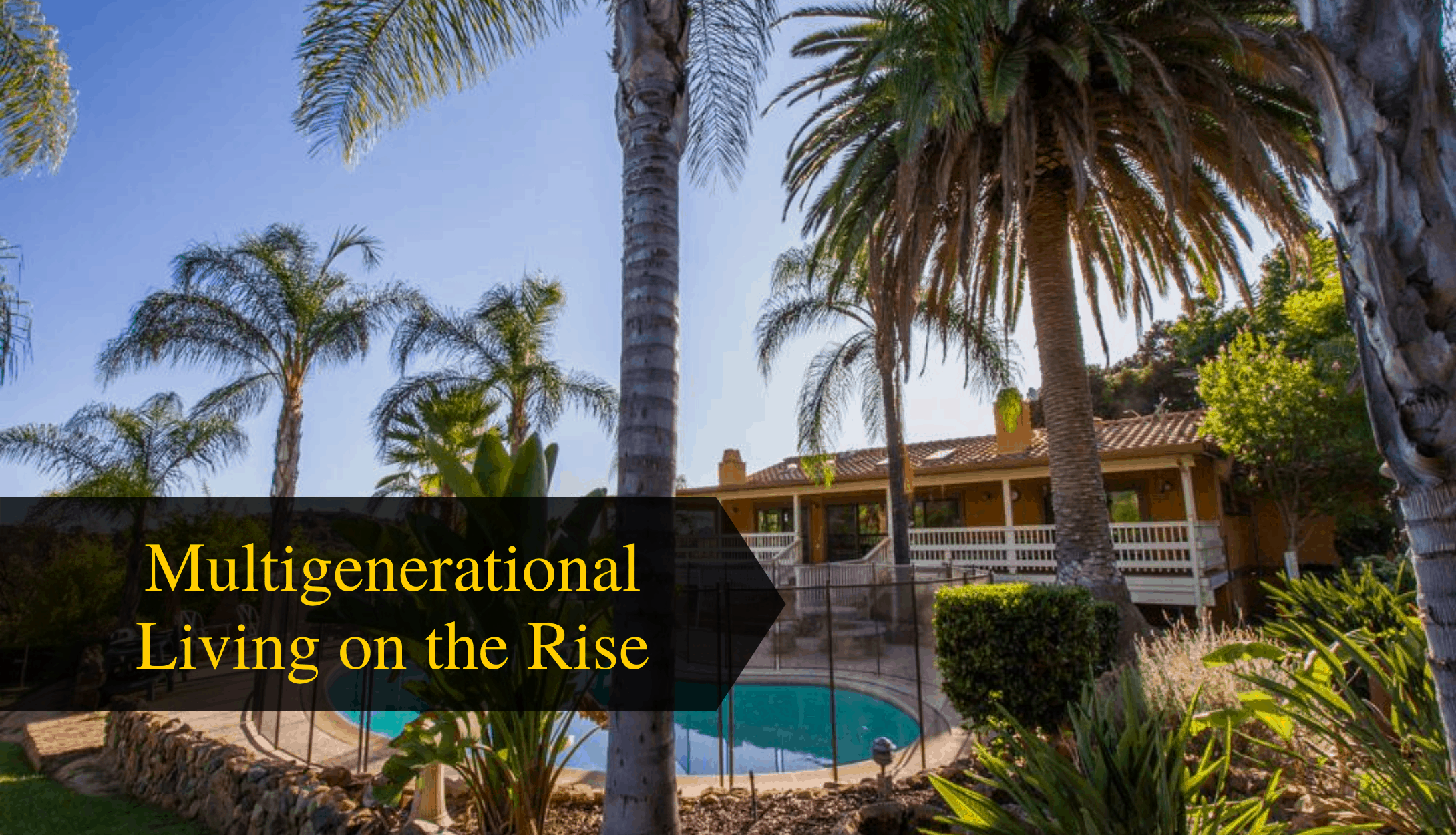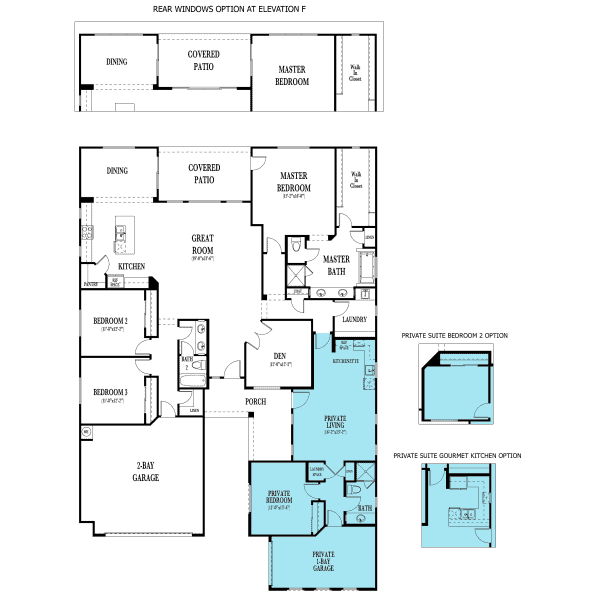 A multigenerational home or multi-gen family household is any property that houses multiple generations or sometimes multiple families under one roof. The general idea of multi-generational living is that at least two adult generations (grandparents, children & grandchildren) live together. It is important to remember that the idea of a “family” in this case can be adapted to include close extended relatives or sometimes close family friends.
A multigenerational home or multi-gen family household is any property that houses multiple generations or sometimes multiple families under one roof. The general idea of multi-generational living is that at least two adult generations (grandparents, children & grandchildren) live together. It is important to remember that the idea of a “family” in this case can be adapted to include close extended relatives or sometimes close family friends.
Multigenerational Living on the Rise
Due to social and cultural norms as well as economic conditions, this type of living situation is popular in many parts of the world including Asia, Africa and South America. While about 1 in 5 older persons in Northern America and Europe live alone, multigenerational living is gaining popularity in these regions because they are practical, affordable and allow for more family time. Between 2000 and 2016, the number of multigenerational homes in the United States increased from 42 million to 64 million. This number is expected to rise at an accelerating rate due to both economic and cultural shifts. As many as 41% of Americans buying a home are considering accommodating an elderly parent or an adult child, according to a survey conducted by John Burns Real Estate Consulting. In April of 2019, local San Diego lawmakers enacted an $11 million, five-year trial to encourage homeowners to build granny flats and accessory dwelling units by waiving development fees.Types of Multigenerational Homes
In a well-designed multigenerational home, each generation will have their own separate private space and sometimes their own living area, kitchen, and entrance. Common layouts have traditionally included basements, guest houses, granny flats, carriage houses, studio conversions and ohanas (if you’re feeling Hawaiian!). Many homebuilders are considering multigenerational living plans that create the perfect blend of togetherness and privacy for the entire family.
What is a Granny Flat?
According to San Diego regulations, a granny flat can be up to 1,200 square feet, can be attached to or built separate from a full-sized home on the same parcel, and can include kitchens, bathrooms, living areas and private entrances. They cannot be sold as individual homes but can be rented out as long as they meet all zoning requirements and building codes.
Pros and Cons to Multigenerational Households
Pros of Multigenerational Living
Living in a multigenerational home with extended family can come with a lot of advantages including:
- More family time – Grandparents get to spend more time with both their kids and their grandkids. It’s easy to lose touch with both the nuclear and extended family over time. These social and emotional connections create a closer family dynamic.
- Help around the house – More adults mean more support with household matters. Childcare, cooking, cleaning, maintenance, chores, and school and grocery runs can ease the burden of the entire family if there are more people to pitch in.
- Financial Benefits – More household income means greater contribution to household expenses such as mortgages, rent, utilities, food, home maintenance and transportation costs. A large parcel with many living options can also be a good investment property should you decide to sell down the road.
- Safety – Multi-gen homes can help both aging parents and young kids. Knowing that your parents are nearby and safe can reduce the stress you may have should a family emergency occur. Additionally, extra eyeballs on young children is always a good idea.
- At home education & employment – With more jobs and schooling going virtual, extra help with kids at home can help the primary breadwinners get their work completed without distraction.
Cons of Multigenerational Living
Of course, adjusting to multigenerational living can come with many cons, including:
- Less Privacy – Every individual requires their own private space. More people living in one space will impinge on that. This can be stressful for those needing to unwind after work with hobbies and projects.
- Increased Housework – People are messy. With more family under one roof comes more maintenance as well as more regular cleaning. This can be difficult on families with varying approaches to cleanliness or for older homes that require more maintenance.
- Family Tensions – Disagreements are expected in every household. More generations can cause more arguments about things like financial decisions, parenting differences and disagreements about roles and responsibilities in the home.
- Compromised Social Element – An important factor for all generations of a family is the social aspect of a neighborhood. Seniors prefer the walkability and community engagement of a neighborhood while young parents and children prefer neighborhoods with similarly aged residents.
Finding a Multigenerational Home for Sale
For the most part, finding a multigenerational home is still relatively difficult as they are only a small segment of the real estate market. It is far more common for families to renovate their homes to suit multi-gen living rather than purchase a move-in ready home. If you are looking for a multigenerational home, call Red Hawk Realty and we can help you find a turnkey multigenerational home or a property ready to be redeveloped.

